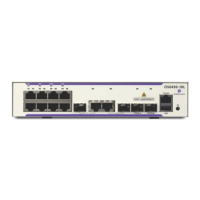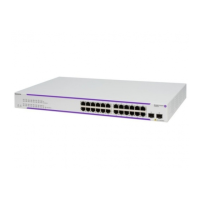OmniSwitch OS6860/OS6900/OS10K Troubleshooting Guide Part No.032996-00 Rev.A
AOS Release 7.X and 8.X January 2015
Alcatel-Lucent Page 29 of 148
5. Troubleshooting Source Learning/Layer 2
Forwarding
Introduction
When a packet first arrives on NI source learning examines the packet and tries to classify the packet to join its
correct VLAN. If a port is statically defined in a VLAN, the MAC address is classified in the default VLAN.
Alternatively, if UNP is being used the MAC address is classified into the correct VLAN based on the rules
defined.
As soon as the MAC address is classified in a VLAN, an entry is made in source address pseudo-CAM
associating the MAC address with the VLAN ID and the source port. This source address is then relayed to the
CMM for management purposes.
If an entry already exists in MAC address database with the same VLAN ID and the same source port number
then no new entry is made. If the VLAN ID or the source port is different from the existing entry in the MAC
address database then the previous entry is aged out and a new entry is made in the MAC address database.
This process of adding a MAC address in the MAC address database is known as source learning.
A MAC address can be denied to learn on a port based on different policies configured through QoS or
Learned Port Security. A MAC address may be learned in a wrong VLAN based on the policies defined for the
port.
Summary of the commands in this chapter is listed here:
____________________________________________________________
show mac-learning summary
show mac-learning mac-address <MAC address>
show mac-learning port <slot/port>
show mac-learning aging-time
show interfaces | grep Number
show interfaces | grep Last
show spantree vlan <vlan-id>
debug $(pidof stpNi) "call stpni_printStats(1,1)"
l2 show
_____________________________________________________________
5.1. Basic Troubleshooting
In order to troubleshoot a source learning problem the first step is to verify that the physical link is up and the
port has correctly auto-negotiated with the end-station.
The next thing is to verify that the port is a member of the right VLAN, if a port is statically configured for a
VLAN, or the UNP policies are correctly defined. The workstation configuration should also be verified.
Check the current MAC table size by using the below command to understand the number of MAC addresses
learned on a switch.
6860-> show mac-learning summary
Mac Address Table Summary:
Domain Static Static-Multicast Bmac Dynamic

